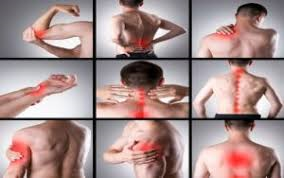Musculoskeletal pain affects millions worldwide. It impacts daily life, limits mobility, and reduces quality of life. Understanding the causes, symptoms, and treatments is essential for effective relief. This guide provides actionable steps to manage and overcome musculoskeletal pain.
Understanding Musculoskeletal Pain
Musculoskeletal pain involves muscles, bones, ligaments, tendons, and nerves. It ranges from mild discomfort to severe, debilitating pain. Common types include back pain, neck pain, arthritis, and fibromyalgia. Identifying the source of pain is the first step toward relief.
Causes of Musculoskeletal Pain
Injuries, poor posture, repetitive movements, and aging are the primary causes. Accidents, sports injuries, and falls can lead to acute pain. Chronic conditions like osteoarthritis and rheumatoid arthritis cause long-term discomfort. Sedentary lifestyles and lack of exercise weaken muscles, increasing pain risk.
Symptoms to Watch For
Pain, stiffness, swelling, and reduced range of motion are common symptoms. Some experience fatigue, muscle spasms, or numbness. Symptoms vary depending on the affected area. Persistent pain lasting more than a few weeks requires medical attention.
Diagnosing Musculoskeletal Pain
Accurate diagnosis is crucial for effective treatment. Doctors use physical exams, medical history, and imaging tests like X-rays or MRIs. Blood tests may identify underlying conditions like arthritis. Early diagnosis prevents complications and improves outcomes.
When to See a Doctor
Seek medical help if pain persists, worsens, or interferes with daily activities. Sudden, severe pain after an injury requires immediate attention. Unexplained weight loss, fever, or night pain may indicate serious conditions.
Effective Treatments for Musculoskeletal Pain
Treatment depends on the cause and severity of pain. A combination of therapies often works best. Options include medications, physical therapy, lifestyle changes, and alternative treatments.
Medications for Pain Relief
Over-the-counter pain relievers like ibuprofen or acetaminophen reduce mild pain. Prescription medications may be needed for severe cases. Muscle relaxants, anti-inflammatory drugs, and opioids are sometimes prescribed. Always follow your doctor’s advice to avoid side effects.
Physical Therapy and Exercise
Physical therapy strengthens muscles, improves flexibility, and reduces pain. Therapists design personalized exercise programs. Stretching, strength training, and low-impact activities like swimming or yoga are beneficial. Regular exercise prevents future pain episodes.
Lifestyle Changes for Long-Term Relief
Maintain a healthy weight to reduce stress on joints. Practice good posture while sitting, standing, and lifting. Avoid repetitive movements that strain muscles. Incorporate ergonomic tools at work and home. Stay active to keep muscles and joints healthy.
Alternative Therapies
Acupuncture, chiropractic care, and massage therapy provide relief for some individuals. Heat and cold therapy reduce inflammation and soothe pain. Herbal supplements like turmeric or ginger may help. Consult a healthcare professional before trying alternative treatments.
Preventing Musculoskeletal Pain
Prevention is better than cure. Simple habits can protect your muscles and joints. Stay active, eat a balanced diet, and avoid smoking. Regular check-ups detect early signs of problems.
Exercise Regularly
Exercise strengthens muscles, improves flexibility, and supports joints. Aim for at least 30 minutes of moderate activity daily. Include strength training, cardio, and stretching in your routine. Listen to your body and avoid overexertion.
Maintain Proper Posture
Good posture reduces strain on muscles and joints. Sit with your back straight and shoulders relaxed. Use a chair with lumbar support. Keep your computer screen at eye level. Stand with your weight evenly distributed on both feet.
Use Ergonomic Tools
Ergonomic chairs, keyboards, and desks reduce strain at work. Adjust your workspace to fit your body. Take breaks to stretch and move around. Use proper techniques when lifting heavy objects.
Coping with Chronic Pain
Chronic pain affects mental and emotional well-being. Managing pain requires a holistic approach. Seek support from healthcare professionals, family, and friends. Stay positive and focus on activities you enjoy.
Mental Health and Pain
Chronic pain often leads to anxiety, depression, or stress. Counseling or therapy helps manage emotional challenges. Mindfulness, meditation, and relaxation techniques reduce stress. Stay connected with loved ones for emotional support.
Pain Management Programs
Specialized pain management programs offer comprehensive care. These programs include medical treatments, physical therapy, and psychological support. They teach coping strategies and improve quality of life.
When Surgery is Needed
Surgery is a last resort for severe cases. It may be necessary for herniated discs, joint replacements, or severe injuries. Discuss risks and benefits with your doctor. Post-surgery rehabilitation is crucial for recovery.
Types of Surgery
Common surgeries include joint replacement, spinal fusion, and arthroscopy. Surgeons remove damaged tissue or replace joints with artificial ones. Recovery times vary depending on the procedure.
Preparing for Surgery
Follow your doctor’s instructions before surgery. Stop smoking, eat a healthy diet, and exercise to improve recovery. Arrange for help at home during recovery. Ask questions to understand the procedure and expected outcomes.
Post-Surgery Care
Rehabilitation is essential for recovery. Physical therapy restores strength and mobility. Follow your doctor’s advice on activity levels and medications. Attend follow-up appointments to monitor progress.
Nutrition for Musculoskeletal Health
A balanced diet supports muscle and joint health. Nutrients like calcium, vitamin D, and omega-3 fatty acids are essential. Avoid processed foods and sugary drinks. Stay hydrated to keep tissues healthy.
Foods to Include
Eat plenty of fruits, vegetables, lean proteins, and whole grains. Dairy products, leafy greens, and fortified foods provide calcium and vitamin D. Fatty fish, nuts, and seeds are rich in omega-3s.
Foods to Avoid
Limit red meat, processed foods, and sugary snacks. These foods increase inflammation and worsen pain. Avoid excessive alcohol and caffeine.
Staying Motivated
Managing musculoskeletal pain requires commitment. Set realistic goals and celebrate small victories. Stay consistent with treatments and lifestyle changes. Surround yourself with supportive people.
Tracking Progress
Keep a pain diary to monitor symptoms and treatments. Note what works and what doesn’t. Share this information with your doctor. Adjust your plan as needed.
Celebrating Success
Acknowledge improvements, no matter how small. Reward yourself for sticking to your plan. Stay positive and focus on long-term benefits.
Final Thoughts
Musculoskeletal pain doesn’t have to control your life. With the right knowledge and tools, you can manage and overcome it. Take proactive steps to protect your muscles and joints. Seek professional help when needed. Stay committed to a healthy lifestyle. Relief is within reach.
This guide empowers you to take charge of your musculoskeletal health. Start today and move toward a pain-free life.









